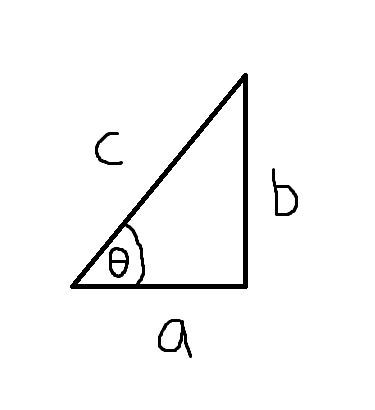You can use any of the six standard trigonometric functions to find #theta#. I'll show you how to find it in terms of arcsine and arccosine.
Recall that the sine of an angle #theta#, denoted "#sintheta#", is the side opposite of #theta# divided by the hypotenuse of the triangle. In the diagram, side #b# is opposite to #theta# and the hypotenuse is #c#; therefore, #sintheta=b/c#. To find the value of #theta#, we use the arcsine function, which is essentially the opposite of the sine function:
#arcsin(sintheta)=arcsin(b/c)#
#->theta=arcsin(b/c)#
You may also see the arcsine function written as #sin^(-1)theta#.
It is important to understand the relationship between sine and arcsine. Say you have #theta=30# degrees; then from the unit circle, #sintheta=1/2#. But what if you knew that the sine of #theta# is equal to (#1/2#) and wanted to know the angle? In that case, you would use the arcsin function: #arcsin(1/2)=30# degrees. Sine and arcsine are inverses. The input of one is the output of the other, and vice versa.
For cosine, you would use the same process. Just remember the cosine of an angle is the side adjacent to the angle divided by the hypotenuse of the triangle. In the diagram, the adjacent side is #a# and the hypotenuse is #c#, so #costheta=a/c#. To find #theta#, you use the arccos function, which has the same relationship to cosine as arcsin has to sine. And again, you may see arccos written as #cos^(-1)theta#.
So if #costheta=a/c#, then #arccos(costheta)=arccos(a/c)# or #theta=arccos(a/c)#.
To answer your question directly, any trig function can be used to find #theta#, as long as you have at least #2# side lengths to work with. If you're new the the whole sin/arcsin and cos/arccos, it can be a lot to take in - but don't worry, because it's not as complicated as the names make it seem.





